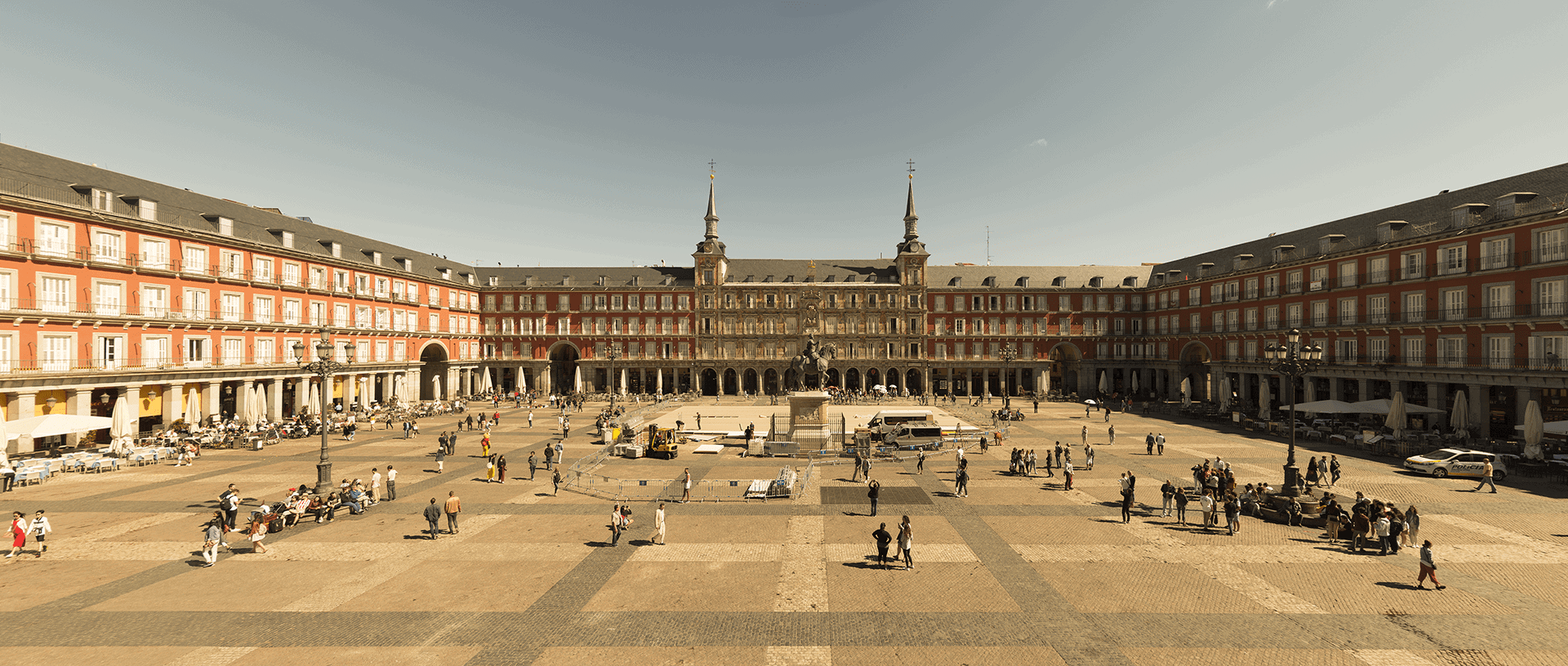Ferrovial
On the Road with Ferrovial. José Manuel Ballester
Structure
by Elvira Lindo
Places for coexistence
My passion for engineering, architecture, and construction in urban spaces dates back to my childhood, which was overshadowed by projects that shaped the history of my family.
Like each of the places where we ended up living, each member of my family is closely related to a project. I was born during the reconstruction of the Port of Cádiz, and our childhood photos all have a dusty background of soil and concrete. That was one of my great life lessons: an admiration for that which is yet to be, an insatiable curiosity about the process, and an awareness
that every construction project is the result of a design and that it involves many hands coming together, a huge physical effort, a sort of choreography that ranges from the drawing board to the manual trades. Those unforgettable experiences fueled my imagination: when I see a half-completed project, I try to visualize the system that it will become, and when I see a completed structure, I try to travel back in time, to the moment when it first took shape on paper.
Whenever I visit the Atazar Dam, where I spent four years of my childhood, I remember how the workers would pile into the trucks—standing room only—to be taken down to build what the engineers had designed. The wheels kicked up so much dust that it was impossible to see the trucks as they departed: it was like a John Ford movie, set against a backdrop of hope and personal dramas. Early every morning, my father would put on his hard hat, hop into the Jeep, and drive off to work. He loved the projects, and his enthusiasm always aroused my interest in the enormous effort being brought to bear.
So how could I not be aware of the huge process involved when a new urban element or building is erected in a city? In these striking photos of Ferrovial projects by José Manuel Ballester, I can feel that energy of collective creation. It’s extremely difficult to simultaneously portray enormous structures and their detailed skeletons, the extraordinary traps that volumes set for the human eye. That’s something only an expert eye can achieve. Ballester introduces the viewer into the space, and I can imagine myself immersed in all those places that are so familiar to me; I know them—I’ve walked through most of them—because walking is how we turn the unattainable into the everyday.
There was a time when, in its supreme arrogance, architecture ignored—despised, even—what ought to be a core mandate for any creation that affects people’s lives: respecting the collective spirit, what Jane Jacobs called “social capital.” However, times have changed, and humanistic movements and the urgency of sustainability have made their mark.
We must find an equilibrium between construction and the interaction with human beings; though the latter may appear capricious and random, it embodies a deep and delicate wisdom
that it is advisable not to perturb. Markets, squares, museums, and theaters—all those buildings and meeting places designed to create bonds within the community fulfill their function better if they facilitate our coexistence. We citizens should not have to submit to crazy urban projects that force us to relinquish customs that have been ratified by the histories of our cities. Quite the contrary, construction in the city must take us into account, and consider each place’s culture and peculiarities, in order to ensure that cities are not merely insipid copies of the same template.
Functionality and beauty are not at odds, and it’s no secret that we behave better and more sociably in settings that are harmonious, accessible, and beautiful. We respect spaces that have been created to protect us from the elements. Repurposing buildings or industrial structures, restoring their beauty by giving them a facelift and so that they can rejoin day-to-day life in the city, is the real challenge of engineering and architecture today, and should always be guided by urban planning to generate pleasure and joy—the joy that creeps up on us unnoticed when we perceive the city as vibrant but also as helping us live. In all these cultural, commercial, and leisure buildings that Ballester has portrayed so skillfully, I see the quality that supports peaceful coexistence by the mass of individuals who make up the tremendous complexity that is humanity.
Elvira Lindo, Writer and Journalist
